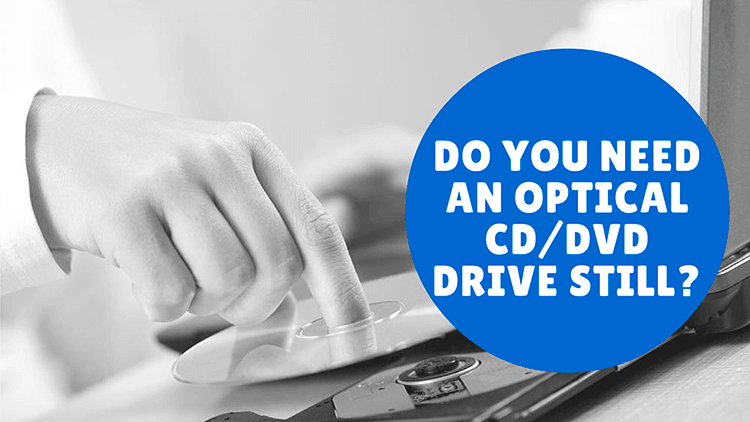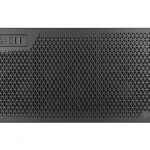Many of us remember how CD’s and DVD’s revolutionized the market of digital media and became an important part of any PC user’s activities, such as making data backups, installing software, watching movies, or storing personal media collections of photographs, music and home videos. For a number of years, an optical drive (burner) has been the standard on desktop and laptop computers.
However, as we have seen time and time again, technology does not stand still. What was widespread one day can be out of date the following. The situation changed when USB compatible flash memory drives were introduced – smaller, faster, more reliable and the most important: did not require a bulky burner. Of course, at that time nobody thought that a memory stick would be able to replace a CD or DVD due to its relatively small capacity and high cost.
Today, however, we can see that this situation has changed – the capacity of flash drives are rapidly increasing and prices are dropping dramatically. Along with the appearance of portable external hard-drives, which already facilitate the ability to store terabytes of data, the relevancy of having a CD/DVD burner may be seen as unimportant.
So now, many of the PC users are asking themselves if the days of CD/DVD media are numbered? Well, there is no straight answer to this question, but we can at least try to observe and summarize some factors that contribute to the situation.
Hardware
Ultrabooks, netbooks and even some models of laptops already come without optical drives. The form factors, such as tablets for example, come optical drive free by default. It is already noticeable that some desktop manufacturers also began shifting away from optical drives in their products by removing slots for ones, although this trend is slower than it is in mobile solutions.
On the other hand, DVD and Blu-ray drives are still in high use and remain very popular. Most probably, the biggest change as far as DVD and Blu-Ray drives are concerned, will be not having the devices internally in the device, but instead being available as an external accessory connected to the desktop, laptop or tablet via USB interface. We have seen this trend to begin in laptops already and can expect it to grow into more outlets going forward.
Software and Games
Despite the fact that most software, such as operating systems and games, are still massively available from retailers on DVDs, more and more vendors are making their applications available for purchase either on flash drives or online and users are already getting used to this. For example, the recent versions of Apple Mac OS come only on flash drives while other popular services, like Steam or Origin, offer their customers virtually any game to be purchased and downloaded online. The same goes for the mobile sector – the services like the Apple App Store and Google Play Store offer their applications available online by default.
This factor alone is leading to the continued declination of the optical drives due to increasing high-speed Internet connectivity and the prevalence of large USB drives and portable USB hard-drives.
Movies and Music
It is not a surprise that the movie and music sector are traveling the same road as software and games. Most of the content is already available online and can be either streamed or purchased and downloaded. By making video content available online, popular services like Netflix, CuriosityStream, Hulu Plus, Blockbuster Video and many others are removing the need for a DVD drive to play a movie on your desktop or laptop.
The online music streaming services, such as Apple Music, Rhapsody, Spotify, Pandora, or Tidal are also changing the landscape of music streaming. Thanks to these services, needing to burn your favorite music and stored on a CD or DVD is obsolete. And even if you don’t want to listen, you can purchase and download music and store it on your flash or external hard-drive – just go to the Apple iTunes or Amazon, for example.
Bottom line
Having said that, some readers may be thinking that the days of the optical drives are gone and done with. Not quite. Some strong cases in favor of optical drive can be made, such as back-ups or being able to play home videos through your standalone DVD player onto the big TV screen, still remain and are certainly good reasons to keep it, but perhaps not good enough to keep the drives internally in your device. Certainly, over time, as customers start to manage their data in a more efficient way, the reliance on optical drives will lessen. The portable computers and the app store model, as well as streaming video and music online, eventually will end the need of having CD optical drives.









This is a really informative article about how rising technology is leading toward the demise of the optical drive.
While it may be true that someday there won’t be a need for a laptop with a CD/DVD drive, the total annihilation of laptops with an optical drive is no-where in the foreseeable future.
For one thing there are still plenty of applications and software that can’t be downloaded from the internet, and therefore require the use of a CD to transmit information.
Secondly, the hot new move in the world of internal laptop storage is the solid-state drive-beloved for the speed with which it works. And while it is fast, the capacity isn’t big enough to hold all the information many of us have stored on our sacred CDs and DVDs.
Finally, there is still a love and desire for physical media. Call it nostalgia. But the faster technology moves, the more people are inclined to cling on to the familiar.